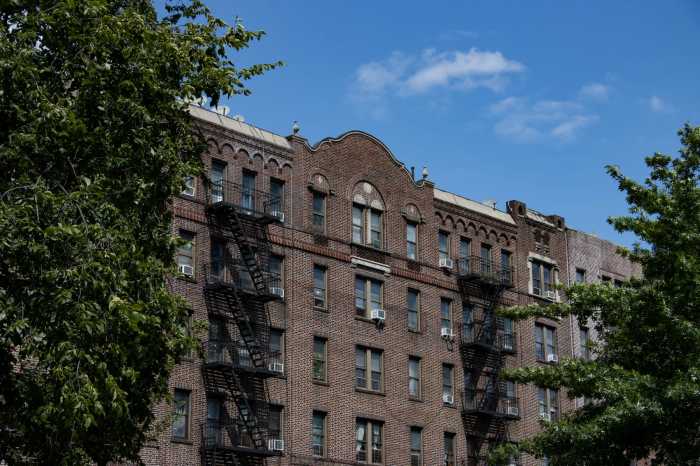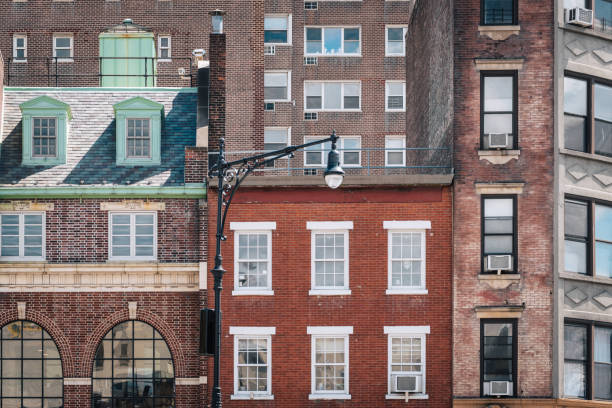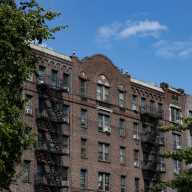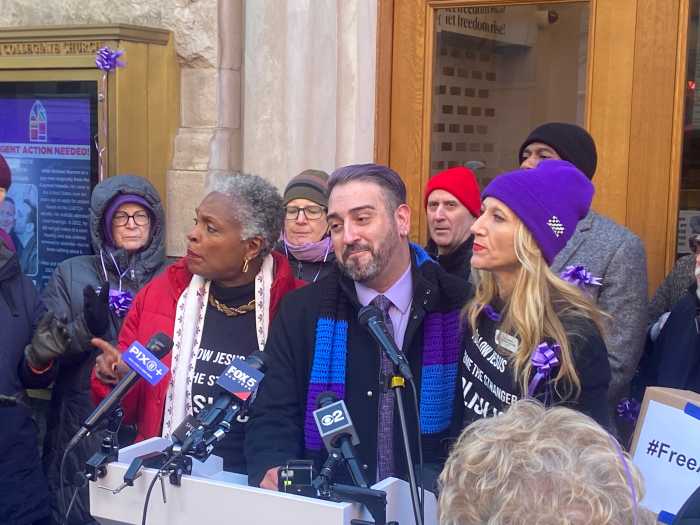Forget the poor door — this housing complex will have poor buildings.
The developer behind the massive 10-tower waterfront Greenpoint Landing project on Friday broke ground on construction of the first three buildings in the complex, which will contain entirely below-market-rate units.
Neighbors say they are glad that the deep-pocketed developers will offer some units for less-than-luxury price tags, but are appalled that it is shoving some of the less-wealthy residents into their own buildings, instead of dispersing all the so-called “affordable” units amongst all the properties.
“You are going to know they are poor because of the door they go into,” said neighbor Helen Kersten, who has been a vocal opponent of both Greenpoint Landing and 77 Commercial Street, which is another smaller residential project planned nearby.
Developers Greenpoint Landing Associates and L and M Development Partners claim they’re building the 300 cheaper units before starting work on the rest of the project so that lower-income locals will have access to the housing more quickly. They ultimately plan to build as many as 5,500 units on the site, around 1,400 of which will be below-market-rate, said a spokeswoman for the project.
“This approach allows us to fast-track 300 of the 1,400 units of permanently affordable housing at Greenpoint Landing, which makes up 25 percent of the entire project and includes deeply-affordable apartments for families,” said spokeswoman Johanna Greenbaum.
The developers plan to open the first of the three below-market-rate buildings at 21 Commercial St. in about a year (the property has been under construction for months, despite Friday’s official ground-breaking ceremony). That building will have 93 units, which will go to families who make between 40 percent and 60 percent of the “area median income” — the measurement that is typically used to determine who gets to move into below-market-rate housing. The current median income for a family of three in New York is $77,700, which means the income range in the building for a family of that size will be $31,080 to $46,620 a year.
The second building at 33 Eagle St. will open in late 2016 and will include 98 units for between 40 percent and 120 percent of the area median income, which would include a three-person family that makes up to $93,240 a year. The third building at 5 Blue Slip, which will be a new address created for the complex, will include 103 units, which will go to families who bring in between $23,350 and $46,620 a year — 30 to 60 percent of the area median income.

Half of the units will be two-bedrooms and rents will start at between $400 and $500 a month, said a company spokeswoman.
The first three buildings will each have a gym and bike storage, but the developers have not yet decided if the buildings that also contain market-rate units will have the same amenities or fancier accoutrements, said a spokeswoman. They will be designed by the same architect as the first market-rate building, she said.
The city originally okayed the project in 2013 with an agreement that the developers would receive a $136,000 subsidy for each below-market-rate apartment in the complex, but the city says it has renegotiated the deal, and will now only hand out $68,000 per unit — or $95,200,000 taxpayer dollars for all 1,400 apartments.
Pols say they are thrilled that the mega-development will bring not only more below-market rate housing to the borough, but also a 640-seat school, parkland, and jobs for locals.
“We have worked hard to make this the best project it can be,” said Deputy Mayor Alicia Glen. “It will ultimately mean more than a thousand affordable apartments in a neighborhood where fast-rising rents are putting pressures on working families.”
But residents have long argued that the development, which will be built over the span of a decade, will overwhelm other local resources, including cops, firefighters, and transit systems — especially in concert with 77 Commercial Street, which will add two 30-story high-rises with an additional 720 units to the area.
“There is not enough transportation, and they are building a bunch of big-box buildings and we have got one little fire department,” said Kersten.

























